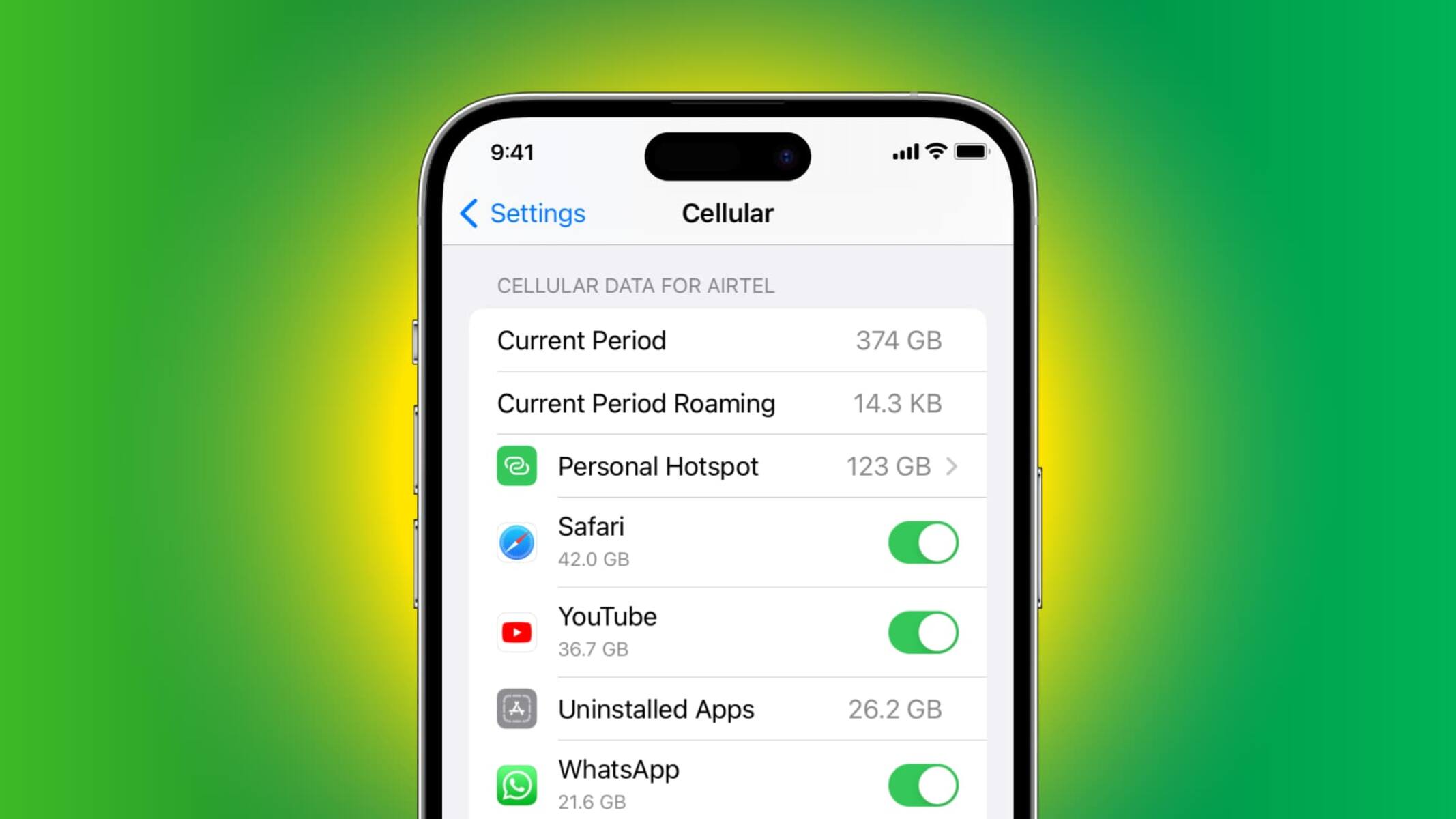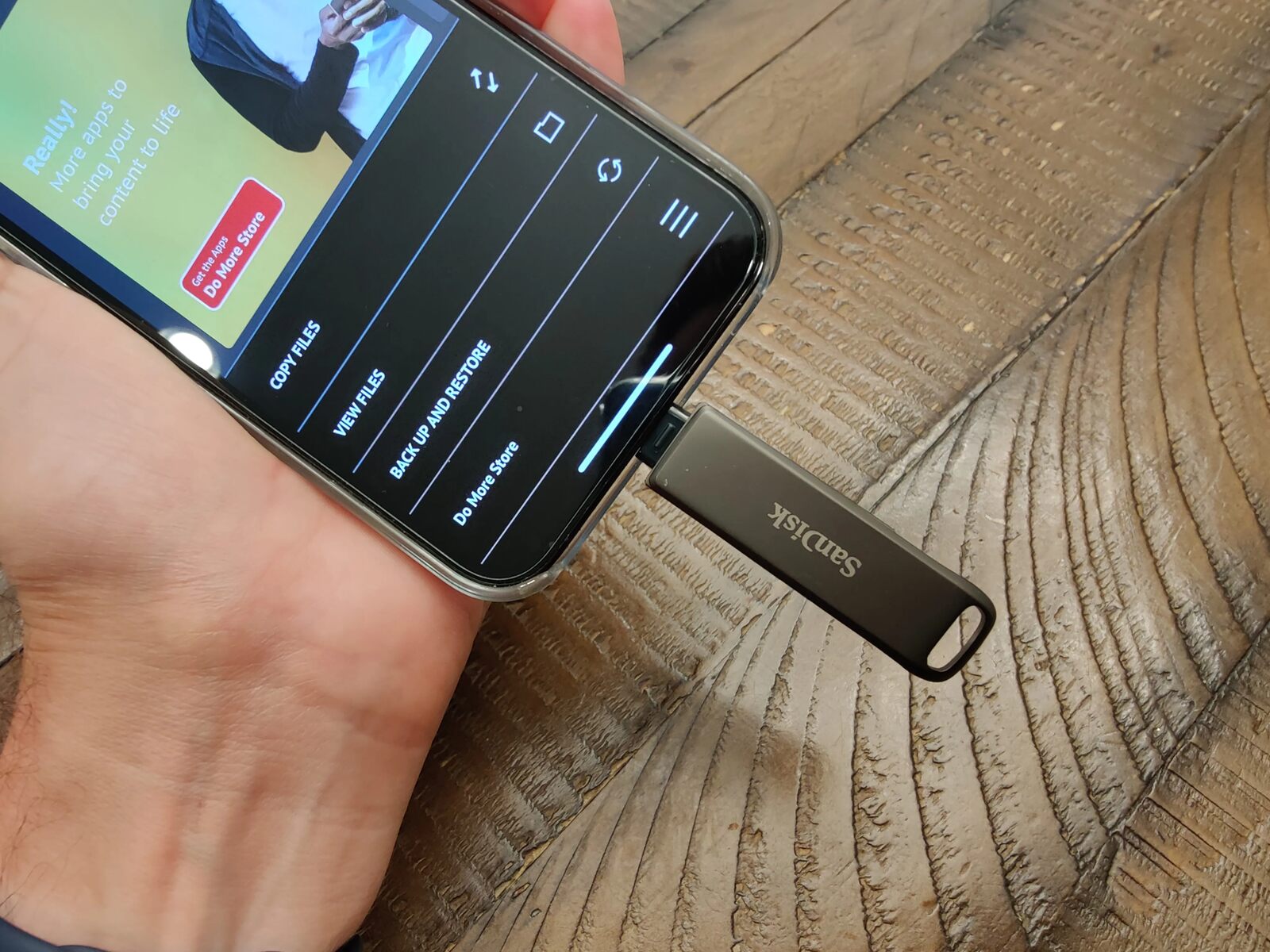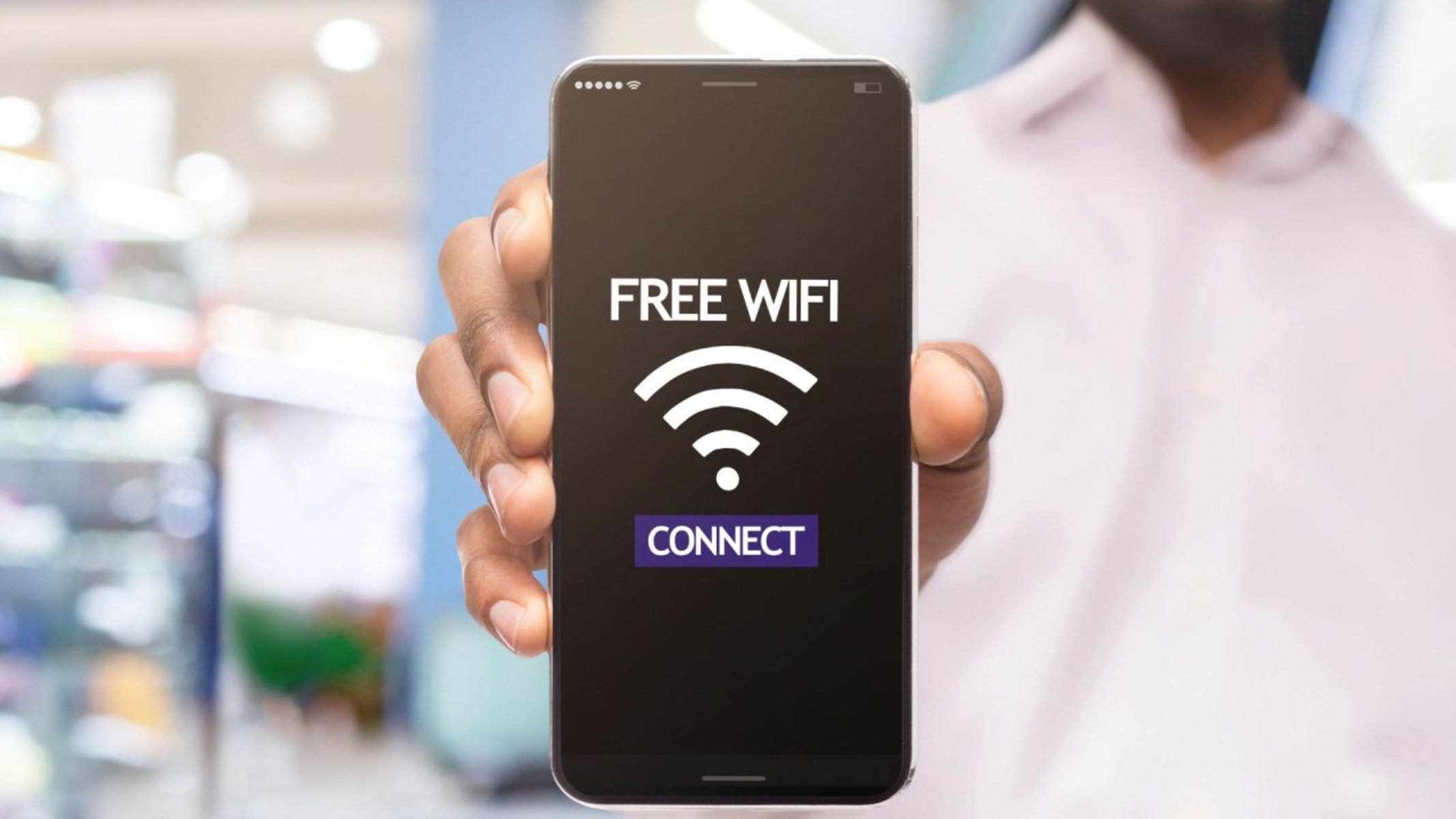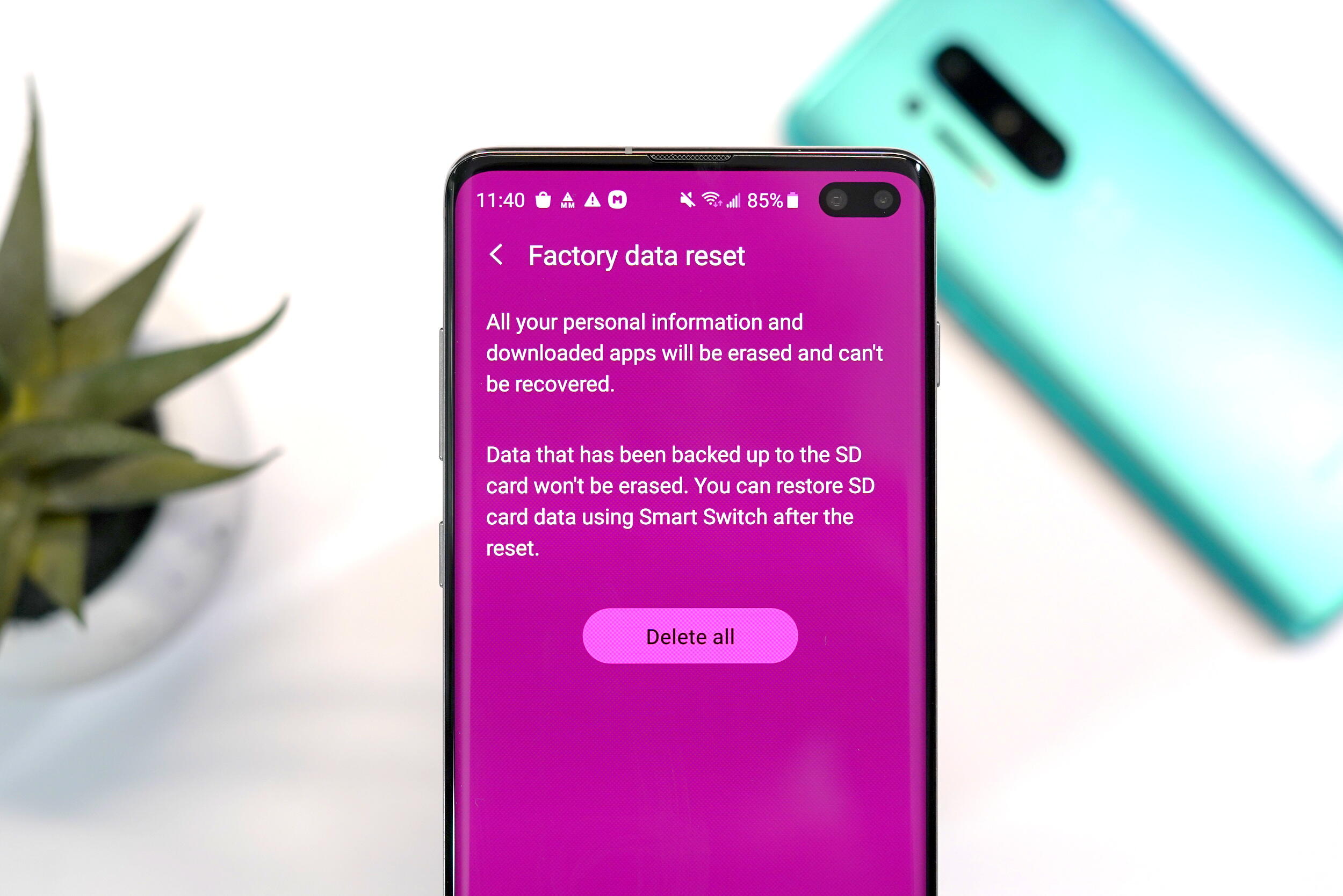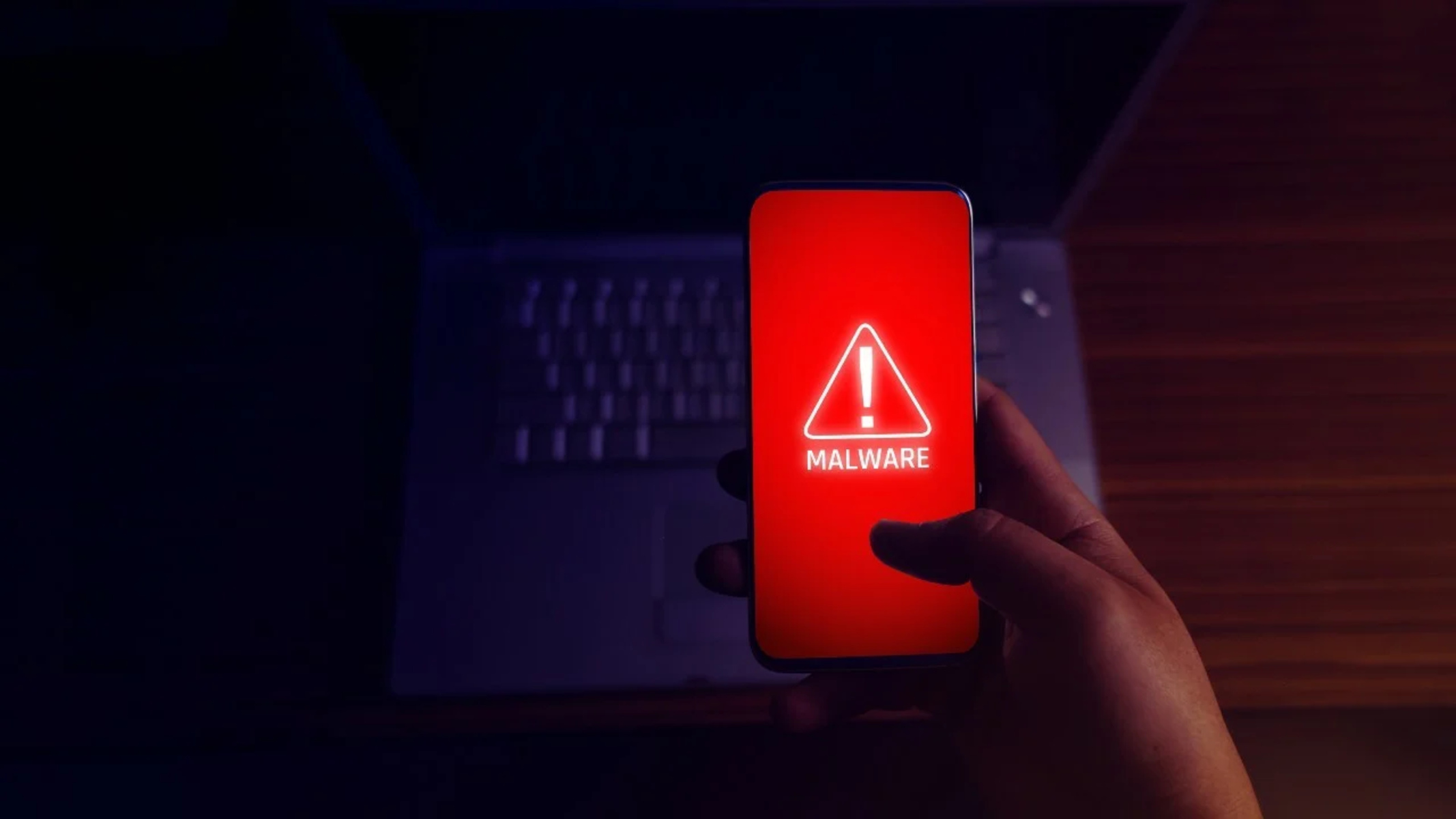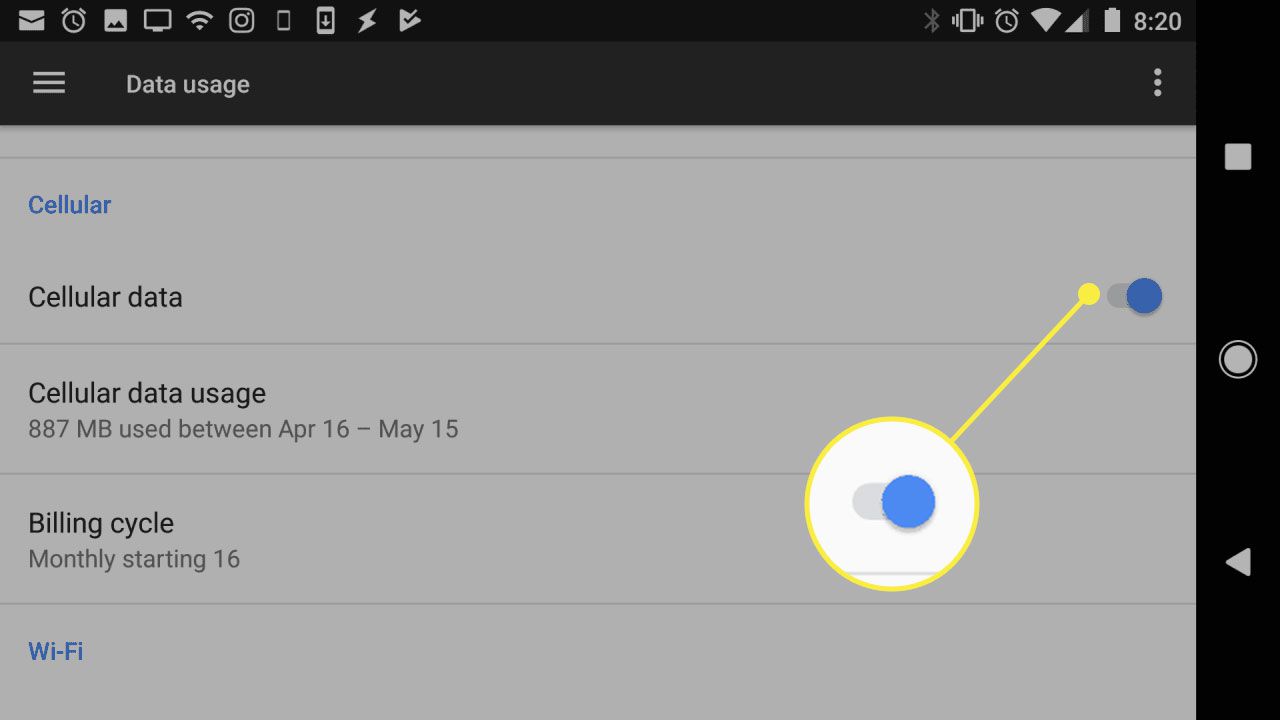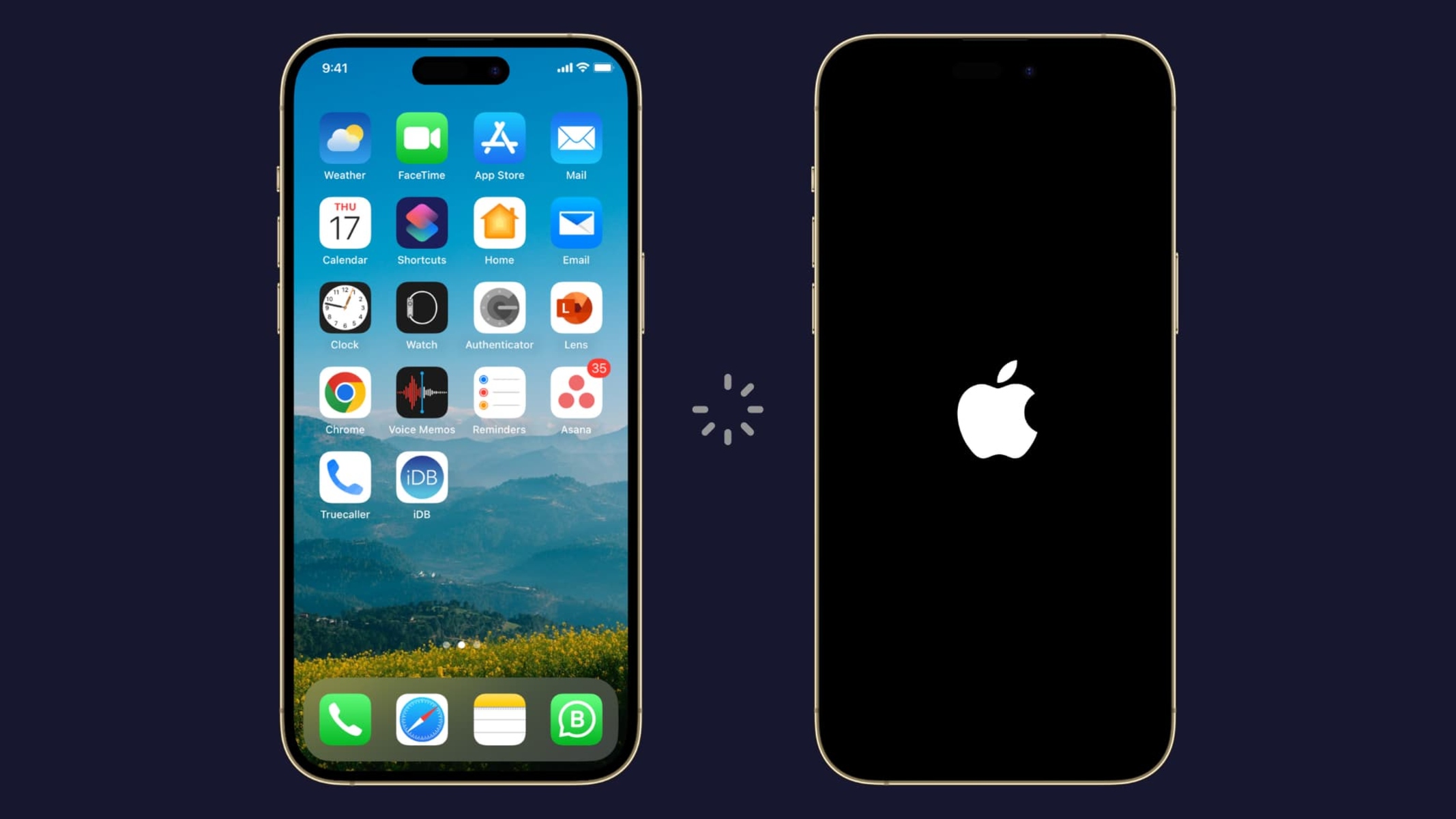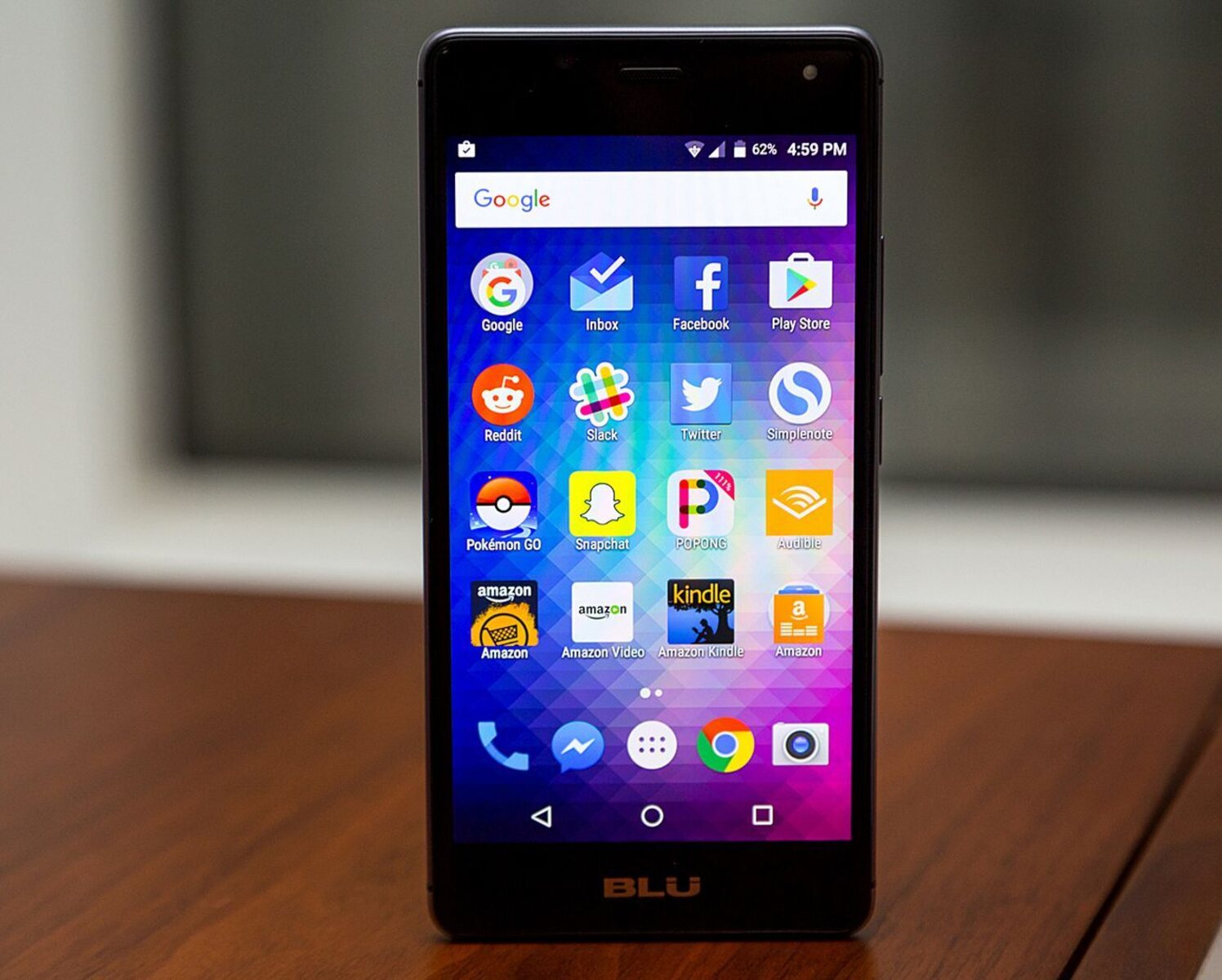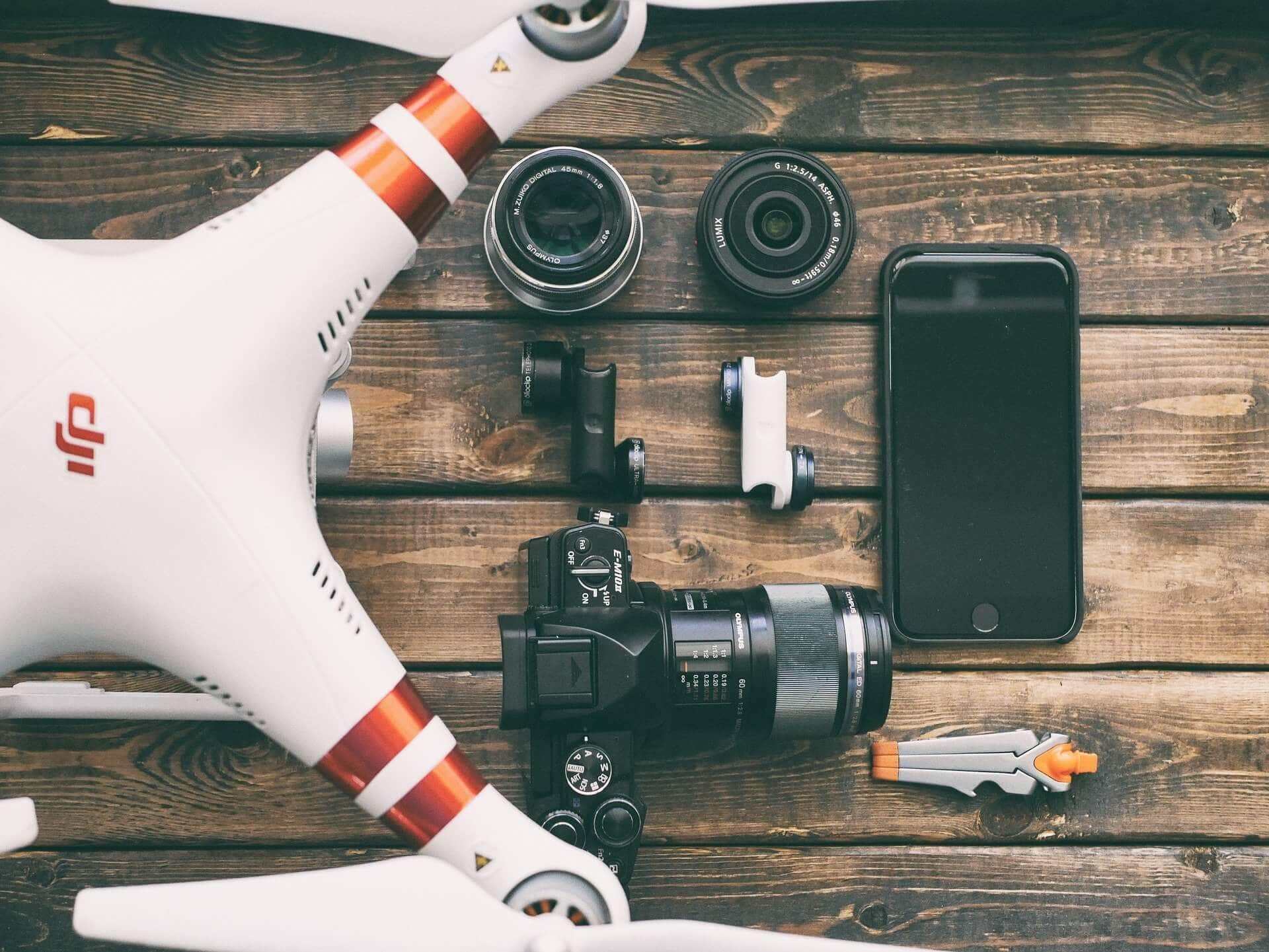Introduction
With the rise of smartphones and the increasing reliance on mobile connectivity, data usage has become a significant aspect of our daily lives. From checking emails and browsing the web to streaming videos and playing games, our smartphones constantly communicate with the online world, consuming data in the process. Understanding what uses data on your smartphone can help you manage your usage effectively and avoid exceeding your monthly data allowance.
In this article, we will explore the various activities and applications that contribute to data usage on your smartphone. By gaining a better understanding of these factors, you can make informed decisions about how to optimize your data consumption while still enjoying your favorite digital experiences.
It is important to note that data usage can vary depending on factors such as the quality of the connection, app settings, and individual usage habits. While these figures may not be exact for every smartphone user, they serve as a general guide to help you assess your data consumption.
So, let’s dive in and discover what applications and activities on your smartphone are typically the biggest culprits when it comes to using up your data allowance.
Background: What is Data Usage?
Data usage refers to the amount of data consumed by your smartphone while performing various activities such as browsing the internet, streaming media, using apps, and downloading content. Whenever your smartphone connects to the internet, it sends and receives data packets that contain information, allowing you to access websites, send messages, and use online services.
Data usage is typically measured in megabytes (MB) or gigabytes (GB) and is an important consideration for mobile users, especially those with limited data plans or who want to avoid additional charges for exceeding their data limits. It is important to understand which activities on your smartphone consume the most data so that you can manage your usage effectively and make the most of your data allowance.
When it comes to data usage, it’s essential to distinguish between two types: mobile data and Wi-Fi data. Mobile data refers to the information consumed when your smartphone connects to the internet through your mobile network provider, such as 4G or 5G. Wi-Fi data, on the other hand, is the data used when your smartphone connects to a Wi-Fi network, such as at home or in a public place.
While using Wi-Fi generally does not incur additional charges, mobile data usage can have an impact on your monthly bill and data allocation. Therefore, it’s crucial to be aware of your smartphone’s data usage habits, especially when you’re not connected to a Wi-Fi network.
In the following sections, we will explore various applications and activities that consume data on your smartphone. By understanding how these different activities impact your data usage, you can make informed decisions to manage your data effectively, ensuring that you stay within your limits and avoid unexpected charges.
Default Applications
When you first get a new smartphone, it typically comes pre-loaded with a variety of default applications. These applications serve a range of purposes, from providing essential functionalities to offering entertainment options. While default applications may differ depending on the operating system (such as Android or iOS), some common examples include web browsers, email clients, calendar apps, and weather apps.
Default applications can consume data in several ways. For instance, web browsers use data when you access websites, download files, or stream media content. Email clients sync your mailbox, downloading new emails and attachments, which can eat up your data if you receive large files or have a high volume of incoming messages.
Calendar apps may also utilize data to synchronize your events and reminders across multiple devices, ensuring that you have the latest updates wherever you access your calendar. Similarly, weather apps often pull data from online sources to provide you with real-time weather forecasts and notifications.
To manage data usage from default applications, consider adjusting the settings to minimize the amount of data they consume. For example, you can enable data-saving modes or restrict automatic downloading of attachments in your email client. Additionally, some web browsers offer data compression features that can help reduce data usage while browsing.
Keep in mind that certain default applications may have background processes that continue to use data even when you’re not actively using the app. It’s a good practice to periodically review the data usage of these default applications and make any necessary adjustments to optimize your data consumption.
While default applications typically have lower data usage compared to certain third-party apps, they can still contribute significantly to your overall data consumption over time. Therefore, being mindful of their data usage and adjusting settings accordingly can help you better manage your data allowance.
Social Media Apps
Social media apps have become an integral part of our lives, allowing us to connect with friends, share moments, and stay updated with the latest trends and news. However, these apps tend to be data-intensive due to the large amount of media content they host, such as photos, videos, and live streams.
Activities like scrolling through your newsfeed, sharing posts, uploading photos, and watching videos consume significant amounts of data. Social media apps constantly refresh and load new content as you navigate through them, resulting in continuous data usage.
To manage data consumption on social media apps, here are a few tips:
- Adjust media auto-play settings: Many social media platforms have auto-play features that automatically play videos as you scroll through your feed. You can often disable this feature or set it to only play videos when connected to Wi-Fi to reduce data usage.
- Limit app refresh frequency: Some social media apps refresh in the background to ensure that you have the latest updates. However, this can contribute to higher data usage. Consider adjusting the refresh frequency or manually refreshing the app when you have a Wi-Fi connection.
- Download media on Wi-Fi: If you frequently encounter interesting videos or posts that you want to save for offline viewing, it’s best to download them while connected to Wi-Fi. This way, you can enjoy them later without consuming additional data.
- Use lite versions or data-saving modes: Some social media platforms offer lite versions of their apps or data-saving modes that minimize data usage. These versions often have reduced functionalities but can be a great option for saving data.
By utilizing these strategies, you can control the data usage of social media apps and enjoy your favorite platforms while staying within your data allowance.
It’s worth noting that different social media apps may have varying data consumption patterns. For example, video-centric platforms like YouTube and TikTok generally consume more data compared to text and image-based platforms like Facebook or Twitter. Understanding the data usage of each app and adjusting your behaviors accordingly can help you manage your data effectively.
Messaging Apps
Messaging apps have revolutionized the way we communicate, allowing us to send instant messages, make voice and video calls, and share multimedia content with ease. Popular messaging apps include WhatsApp, Facebook Messenger, iMessage, and Telegram.
While messaging apps are generally more data-efficient compared to other types of apps, they still contribute to data usage, especially when sending and receiving media-rich content like photos, videos, and voice messages.
Here are a few factors that can affect data usage in messaging apps:
- Media attachments: Sending and receiving media files, such as photos and videos, can significantly impact data usage. It is recommended to compress or resize media files before sending them to reduce their size and conserve data.
- Video and voice calls: Making video or voice calls through messaging apps can consume a considerable amount of data, particularly for longer conversations. Utilizing Wi-Fi whenever possible can help minimize data usage during calls.
- Syncing and backups: Some messaging apps automatically sync your conversations and media files to the cloud for backup purposes. This can consume data, especially if you have large amounts of data to sync or if it happens frequently. Consider adjusting the app settings to control when and how frequently the app performs backups.
- Group chats and notifications: Being part of numerous group chats or receiving frequent notifications from messaging apps can contribute to increased data usage. Managing your notification settings and being selective about joining group chats can help minimize unnecessary data consumption.
It’s worth noting that messaging apps also offer options to minimize data usage, such as enabling data-saving mode, disabling automatic media downloads, or lowering the quality of media files that are sent or received. These settings can help you manage your data consumption while still staying connected with friends and family.
Understanding the data usage patterns of messaging apps and making informed choices about media sharing and app settings can help you strike a balance between staying connected and conserving data on your smartphone.
Web Browsing
Web browsing is one of the primary activities on smartphones, allowing users to access information, shop online, stream media, and much more. However, web browsing can consume a significant amount of data depending on the websites visited, the number of pages loaded, and the type of content being viewed.
Here are some factors that can affect data usage while browsing the web:
- Page content: Websites with heavy media content, such as high-resolution images, videos, or interactive elements, tend to use more data. Each time a webpage is loaded, these files are downloaded, contributing to data consumption. Choosing mobile-friendly websites with optimized content can help reduce data usage.
- Auto-loading media: Some websites have auto-play videos, animated ads, or auto-loading images that consume data without your interaction. Adjusting your browser settings to disable auto-playing media or using browser extensions that block ads can help reduce data usage.
- Caching and data compression: Modern browsers often utilize caching and data compression techniques to minimize data usage. Cached resources are saved temporarily on your device, allowing subsequent visits to a website to load faster and consume less data. Data compression features in browsers can also reduce the size of web pages, further reducing data consumption.
- Browsing habits: The number of web pages visited and the time spent on each page can also impact data usage. Opening multiple tabs, constantly refreshing pages, or leaving pages open in the background can contribute to higher data consumption. Being mindful of your browsing habits and closing unnecessary tabs can help conserve data.
It is worth noting that using Wi-Fi whenever possible for web browsing can significantly reduce mobile data usage. By connecting to a Wi-Fi network, you can leverage the unlimited or high-bandwidth data provided by your internet service provider, making it an ideal option for data-intensive activities like browsing.
Furthermore, some browsers offer data-saving modes that compress web pages, block unnecessary content, and optimize data usage. These modes can be enabled to help reduce data consumption while still providing a satisfactory browsing experience.
Overall, web browsing can consume a considerable amount of data, but by being mindful of the websites you visit, adjusting browser settings, and utilizing Wi-Fi whenever available, you can effectively manage your data usage while enjoying a seamless browsing experience on your smartphone.
Video Streaming
Video streaming has become increasingly popular, with platforms like YouTube, Netflix, and Hulu offering a vast library of movies, TV shows, and other video content. However, streaming videos can consume a significant amount of data, especially when playing high-quality videos.
Here are some factors to consider when it comes to data usage during video streaming:
- Video quality: The quality of the video being streamed plays a crucial role in data consumption. Higher quality videos require more data to be downloaded. Many streaming platforms offer various resolution options, such as SD (Standard Definition), HD (High Definition), or even 4K (Ultra High Definition). Choosing a lower resolution or opting for SD quality can significantly reduce data usage.
- Streaming time: The amount of time spent streaming videos directly impacts data consumption. Streaming longer videos or binging multiple episodes of a TV show can quickly consume a substantial amount of data. Being mindful of your streaming time and limiting excessive binge-watching can help manage data usage.
- Auto-play and preloading: Some streaming platforms have features that automatically play the next video or preload content for smoother playback. While convenient, these features can lead to additional data consumption. Disabling auto-play or adjusting settings to limit preloading can help conserve data.
- Download for offline viewing: Many streaming platforms offer the option to download content for offline viewing. By downloading videos while connected to Wi-Fi, you can enjoy your favorite shows and movies without using any additional data during playback.
It is important to note that streaming videos in high definition or 4K resolution can consume a considerable amount of data. For users with limited data plans, it is recommended to adjust the video quality settings or opt for Wi-Fi streaming whenever possible to avoid excessive data usage.
Lastly, keep in mind that streaming music and audio content, although not as data-intensive as video streaming, can still contribute to data usage. Consider using platforms that offer lower bitrates for music streaming or downloading songs for offline listening to conserve data.
By being mindful of video quality settings, streaming time, and utilizing download options where available, you can enjoy your favorite videos while managing your data usage more effectively.
Music Streaming
Music streaming services have transformed the way we listen to music, offering access to millions of songs on demand. However, streaming music can consume data, especially when streaming high-quality audio or when using the service frequently throughout the day.
Here are some considerations when it comes to data usage during music streaming:
- Audio quality: The audio quality you choose for streaming music directly affects data consumption. Higher quality audio streams require more data to be downloaded. Many music streaming platforms offer options to adjust the audio quality settings, enabling you to choose lower bitrates or data-saving modes to reduce overall data usage.
- Offline listening: Most music streaming services provide the option to download songs and playlists for offline listening. By downloading your favorite tracks while connected to Wi-Fi, you can enjoy your music without consuming additional data during playback.
- Background streaming: Some music streaming apps allow for background playback, meaning you can listen to music while using other apps or when your phone screen is off. While convenient, this feature can contribute to data usage if the app is continuously streaming in the background. Disabling background streaming when not needed can help conserve data.
- Connected devices: Keep in mind that if you use multiple devices to stream music, such as smart speakers or connected car systems, each device will consume data independently. Be mindful of this when streaming music on different devices to avoid exceeding your data allowance.
It’s important to note that streaming music typically consumes less data compared to video streaming. However, if you listen to music for extended periods or use a high-quality audio setting, the data usage can accumulate over time.
If you have a limited data plan, opting for lower audio quality settings, utilizing offline listening features, and connecting to Wi-Fi whenever possible can help you manage your data usage while enjoying your favorite tunes.
Do keep in mind that music streaming is not limited to commercial platforms like Spotify or Apple Music. Streaming music through social media platforms, such as Facebook or Instagram, can also contribute to data usage. It’s a good idea to be aware of the data consumption associated with these platforms and adjust your usage accordingly.
App Updates
Regularly updating your apps is important for ensuring optimal performance, security, and access to new features. However, app updates can consume data, particularly when updating multiple apps or when the updates include significant changes or large file sizes.
Here are some considerations regarding data usage during app updates:
- Automatic updates: Some smartphones have the option to enable automatic app updates, which means that apps will be updated in the background without requiring your manual intervention. While this convenience ensures your apps are always up to date, it can lead to data consumption, especially if you have a large number of apps or if the updates are frequent. If you have a limited data plan, it may be preferable to disable automatic updates and manually update apps when connected to Wi-Fi.
- Update file sizes: App updates can vary in size depending on the changes being implemented and the file compression techniques used. Updates that include significant new features or visual enhancements tend to be larger in size and thus consume more data during the download process. If you are concerned about data usage, you can check the sizes of the updates before initiating the download and decide whether to proceed with the update or wait until you have a Wi-Fi connection.
- Download settings: Some smartphones allow you to adjust download settings for app updates. For example, you can choose to update apps only when connected to Wi-Fi or limit the maximum download size for updates when using mobile data. These settings can help you manage data consumption during app updates by ensuring they are only performed under favorable network conditions.
To minimize data usage during app updates, it is advisable to connect to a Wi-Fi network whenever possible. Wi-Fi connections typically provide faster, unlimited, or high-bandwidth data, allowing you to download updates without worrying about exhausting your mobile data plan.
If you have multiple apps to update and are concerned about using excessive data, you can prioritize critical apps or those that are frequently used and update them individually while on Wi-Fi. This way, you can control data consumption while ensuring that key apps stay up to date.
By being mindful of app updates and adjusting the download settings and timing, you can manage data usage effectively while keeping your smartphone and apps up to date.
Cloud Storage
Cloud storage services allow you to store and access your files, documents, photos, and videos from anywhere, as long as you have an internet connection. While cloud storage offers convenience and accessibility, it is important to be aware of the data usage associated with these services, especially when uploading or downloading files.
Here are some things to consider regarding data usage in cloud storage:
- File synchronization: Cloud storage providers often offer file synchronization features, which automatically upload and update files across multiple devices. This synchronization process involves data transfer, which consumes data. It is essential to monitor the synchronization frequency and settings to avoid excessive data usage, especially if you have limited mobile data.
- File uploads and downloads: Uploading large files or a large number of files to the cloud can consume significant amounts of data. Similarly, when you need to download files from the cloud, data is used to transfer those files to your device. Be mindful of the file sizes and limit uploads and downloads to when you have a stable Wi-Fi connection.
- Automatic backup: Many cloud storage services offer automatic backup functionality, where your files and data are automatically backed up to the cloud. While this feature provides peace of mind, it can consume data, especially if you have a large volume of files or documents that need to be continually synchronized and backed up. Consider reviewing the backup settings to determine the frequency and what data is being backed up to manage data usage effectively.
- File sharing and collaboration: Sharing files or collaborating on documents using cloud storage services typically involves data transfer. When you share or collaborate on files, data is used to upload and update the shared content. Be aware of the data usage associated with frequent file sharing or collaboration, especially if you have limited data available.
Many cloud storage services provide options to adjust upload and download settings, such as limiting the transfer speed or enabling background synchronization only when connected to Wi-Fi. These settings can help you manage data usage by controlling when and how files are transferred to and from the cloud.
Lastly, it is a good practice to review your cloud storage usage periodically. Deleting unnecessary files or using file compression tools can help reduce the amount of data being stored and synchronized, resulting in lower data usage.
By being mindful of file synchronization, upload and download activities, backup settings, and file sharing, you can effectively manage data usage in cloud storage while enjoying the convenience and accessibility it provides.
GPS and Navigation
GPS and navigation services on smartphones have revolutionized the way we navigate and find our way around. Whether you’re using a dedicated navigation app or the maps feature on your smartphone, it’s important to understand the data usage associated with GPS and navigation activities.
Here are some considerations when it comes to data usage during GPS and navigation:
- Map downloads: One of the key data-consuming aspects of GPS and navigation is downloading maps to your device. If you use offline maps, where you download regions or areas in advance, the data consumption is minimal as the maps are stored locally. However, if you rely on online maps, real-time navigation, or frequently update maps, data will be used to download the necessary map information as you drive or navigate.
- Turn-by-turn directions: When you’re actively using GPS for turn-by-turn directions, data is consumed as your device continuously communicates with the navigation app’s servers to receive real-time updates, traffic information, and route guidance. This data usage occurs throughout your journey, so it’s important to be aware of it, especially if you have limited data available.
- Online services: Some navigation apps and GPS services offer additional features like live traffic updates, points of interest, or real-time location sharing. These features may require a connection to the internet to function properly, resulting in data consumption. Consider disabling these features or adjusting the settings to minimize data usage when not needed.
- Compressed route data: Some GPS and navigation apps employ data compression techniques to minimize the amount of data transferred during navigation. This can help reduce the overall data usage while ensuring you still receive accurate and timely directions. Look for navigation apps that offer data-saving modes or optimized data usage settings.
To manage data usage during GPS and navigation, it is advisable to download maps for offline use whenever possible. This allows you to navigate without relying on continuous data usage while ensuring you have access to maps even in areas with limited or no internet connectivity.
Additionally, connecting to Wi-Fi networks whenever available can help minimize the impact on your mobile data plan when using online maps or updating map data. Utilizing Wi-Fi networks for downloading maps or using navigation services can ensure a seamless experience without worrying about excessive data consumption.
By being aware of the data usage associated with GPS and navigation and taking advantage of offline maps and Wi-Fi connectivity, you can effectively manage your data usage while safely navigating to your destination.
Email has become an essential communication tool, allowing us to send and receive messages, attachments, and important documents effortlessly. While email itself does not consume significant data, certain activities and settings related to email usage can contribute to data usage on your smartphone.
Here are some considerations when it comes to data usage in relation to email:
- Sending and receiving attachments: Email attachments, such as photos, documents, or videos, can consume data when they are sent or received. The size of the attachments directly impacts data usage. For larger files, it’s advisable to connect to a Wi-Fi network to avoid using excessive mobile data. Alternatively, you can consider compressing files or using cloud storage services to share links instead of attaching large files.
- Synchronizing mailbox: Email clients on your smartphone often sync your mailbox to ensure you have the latest messages and updates. This synchronization process involves data transfer as your device communicates with the email server. The frequency and settings of mailbox synchronization can affect data consumption. Consider adjusting the synchronization frequency or settings to minimize data usage, especially if you have a large number of emails or receive emails with large attachments.
- Automatic fetching and notifications: Email apps may be configured to fetch new emails in the background and provide real-time notifications. While convenient, this constant fetching and updating can contribute to increased data usage, especially if you have multiple email accounts or receive a high volume of emails. Adjusting the app settings to fetch emails less frequently or disabling automatic fetching when on a mobile data connection can help conserve data.
- Offline access: Some email clients offer offline access, allowing you to view and compose emails even without an active internet connection. This feature can help reduce data usage since you can access and compose emails offline and synchronize them when you have a Wi-Fi connection.
It’s worth noting that the amount of data used by email is generally lower compared to activities like video streaming or web browsing. However, frequent attachment transfers, mailbox synchronization, and automatic fetching can still contribute to data consumption over time.
By adjusting app settings, connecting to Wi-Fi when available, and being mindful of attachment sizes and synchronization frequency, you can effectively manage data usage while staying connected through email on your smartphone.
Mobile Games
Mobile gaming has become immensely popular, with a wide range of games available on smartphones to entertain and engage users. While mobile games can provide hours of fun, they can also consume a significant amount of data, especially when they require an internet connection or have large downloadable content.
Here are some factors to consider regarding data usage in mobile games:
- Online multiplayer games: Multiplayer games that require an internet connection can consume data as your device communicates with game servers to synchronize gameplay, updates, and interactions with other players. The amount of data used during multiplayer gaming depends on factors such as the game’s graphics, the intensity of online interactions, and the frequency of gameplay sessions.
- Downloading game updates and patches: Games often release updates and patches to enhance gameplay, fix bugs, or add new features. These updates usually need to be downloaded, and their size can vary significantly. When updating games, it’s advisable to connect to Wi-Fi to avoid using excessive mobile data, especially if the updates are large.
- In-app purchases and advertisements: Some mobile games offer in-app purchases or display advertisements to generate revenue. The content of these purchases or advertisements may require data to be downloaded or streamed while playing the game. Be aware of the data usage associated with these elements and consider adjusting settings or disabling certain features to minimize data consumption.
- Game streaming and video sharing: Some mobile games allow users to stream their gameplay or share video recordings of their gaming sessions. These features consume data as the game’s video and audio content is uploaded or streamed to online platforms. If you engage in game streaming or video sharing, be mindful of the data usage and consider adjusting the streaming quality or doing it when connected to Wi-Fi.
It’s important to note that different mobile games have varying data usage patterns. Graphics-intensive and online multiplayer games typically consume more data compared to casual or offline games. Reviewing game settings and adjusting graphics or online features can help manage data usage effectively without compromising the gaming experience.
Furthermore, consider using mobile data monitoring tools or features provided by your smartphone’s operating system to track and manage data usage associated with mobile games. These tools can give you insights into how much data individual games are consuming, allowing you to make informed decisions about your gaming habits.
By being aware of the data usage linked to mobile games, optimizing settings, and utilizing Wi-Fi whenever possible, you can enjoy mobile gaming while effectively managing your data consumption.
Automatic Backup
Automatic backup is a feature offered by many smartphones and apps that automatically backs up your device’s data, such as photos, videos, contacts, and app data, to the cloud or other designated storage locations. While automatic backup provides convenience and peace of mind, it can consume data, especially when large amounts of data need to be uploaded or when backup occurs frequently.
Here are some considerations regarding data usage during automatic backups:
- Backup frequency: Automatic backups can be set to occur at regular intervals, such as daily or weekly. The frequency of backups determines how often data is uploaded, and more frequent backups can result in higher data consumption. Consider adjusting the backup frequency based on your needs and the amount of data you generate.
- Backup size and types of data: The size of the data being backed up plays a significant role in data consumption. For example, backing up high-resolution photos and videos can consume more data compared to backing up text-based documents or app data. Some backup services allow you to choose specific types of data to be backed up, giving you more control over data usage.
- Connection type and settings: Automatic backups usually occur when your smartphone is connected to a Wi-Fi network to minimize mobile data usage. However, it’s essential to check your backup settings to ensure that backups are not accidentally performed using mobile data or when the connection quality is poor. Verify that backups are set to occur only when connected to reliable Wi-Fi networks.
- Backup verification and compression: To ensure data integrity and reduce file sizes, backup services may include processes to verify the backup and compress the data. While these processes are designed to optimize data usage, they still contribute to data consumption. Monitoring the backup verification and compression settings can help manage data usage during backups.
It’s worth noting that automatic backups are crucial for safeguarding your data and ensuring you can easily restore it in case of device loss, damage, or software issues. While they consume data, the benefits of having your data backed up far outweigh the potential data usage concerns.
If you have a limited data plan, consider reviewing the size of the data being backed up, adjusting the backup frequency, and utilizing Wi-Fi connections whenever possible. By being aware of the data consumption associated with automatic backups, you can manage your data usage effectively while maintaining the security and integrity of your valuable data.
Operating System Updates
Operating system updates are necessary for smartphones to receive the latest features, security patches, and bug fixes. While these updates are vital for maintaining the performance and security of your device, they can consume data, especially when updating to major new versions of the operating system.
Here are some points to consider regarding data usage during operating system updates:
- Download size: Operating system updates vary in size, with major updates often being larger than minor updates. The size of the update directly impacts the amount of data that will be consumed during the download process. When initiating system updates, it’s prudent to connect to a Wi-Fi network to avoid using excessive mobile data.
- App updates: Along with operating system updates, app updates may also be automatically or manually downloaded during the update process. These app updates can contribute to additional data consumption, especially if there are significant changes or multiple apps require updating. It’s important to be aware of the app update process during operating system updates and consider downloading app updates on Wi-Fi when possible.
- Backup and restore: Operating system updates may involve backing up your device’s data before the update is applied. This backup process can consume data, particularly if you have a large amount of data to be backed up. Likewise, after the update is complete, restoring your data to your device can also consume data. Consider connecting to a Wi-Fi network during backup and restore processes to minimize mobile data usage.
- System optimization and installation: Operating system updates often involve system optimization and installation processes, which may require data transfer to ensure the update is properly installed and configured on your device. These processes can momentarily consume data, but the amounts are usually minimal compared to the initial download size.
It is worth noting that operating system updates are essential for keeping your device secure and up to date with the latest features. The benefits of having an updated operating system usually outweigh the temporary data usage required during the update process.
To manage data usage during operating system updates, it is advisable to connect to Wi-Fi whenever possible and ensure that automatic app updates are disabled temporarily. This way, you can update your operating system without incurring excessive mobile data usage or interruptions due to multiple app updates.
By being aware of the data consumption associated with operating system updates and taking steps to minimize mobile data usage during the process, you can ensure your device remains up to date and secure without surpassing your data limits.
Conclusion
Understanding what uses data on your smartphone is essential for effectively managing your data usage and avoiding unexpected charges or exceeding your data plan limits. Throughout this article, we have explored several activities and applications that can consume data on your smartphone.
From default applications, social media apps, and messaging apps, to web browsing, video streaming, and music streaming, each activity contributes to your overall data usage. It’s important to be mindful of your usage habits, adjust settings, and utilize Wi-Fi whenever possible to minimize data consumption.
Additionally, we discussed the impact of app updates, cloud storage, GPS and navigation, email, mobile games, automatic backups, and operating system updates on your data usage. By being aware of the data usage associated with each of these areas, you can make informed decisions and optimize your data consumption without compromising on the functionality and convenience offered by your smartphone.
To effectively manage your data usage, consider implementing the following tips:
- Connect to Wi-Fi networks whenever possible for data-intensive activities like video streaming, app updates, and cloud storage.
- Adjust settings in apps and devices to reduce data consumption, such as disabling autoplay videos, restricting background data, or enabling data-saving modes.
- Monitor your data usage regularly using built-in monitoring tools or third-party apps to stay informed and identify any data-consuming activities.
- Download or sync content like maps, music, and videos while connected to Wi-Fi to avoid using mobile data.
- Consider optimizing settings, such as adjusting video quality or background synchronization, to conserve data in specific apps or services.
Remember, every smartphone user’s data usage may vary, and it’s crucial to assess your own usage patterns and adjust settings accordingly. By implementing these strategies and being mindful of data consumption, you can strike a balance between enjoying the features and functionality of your smartphone and effectively managing your data usage.







